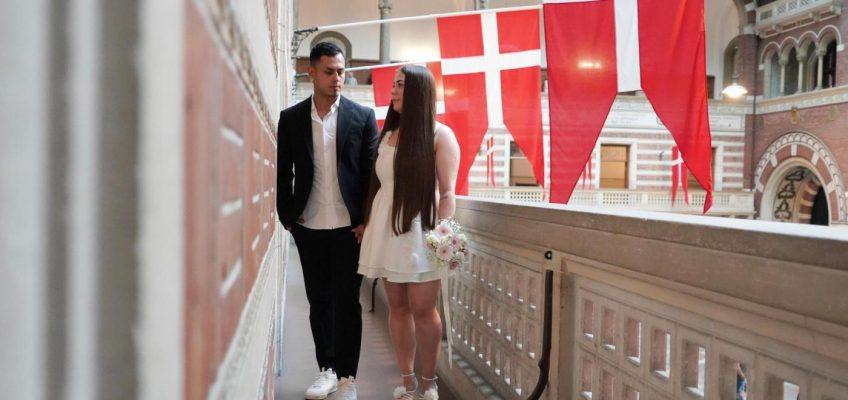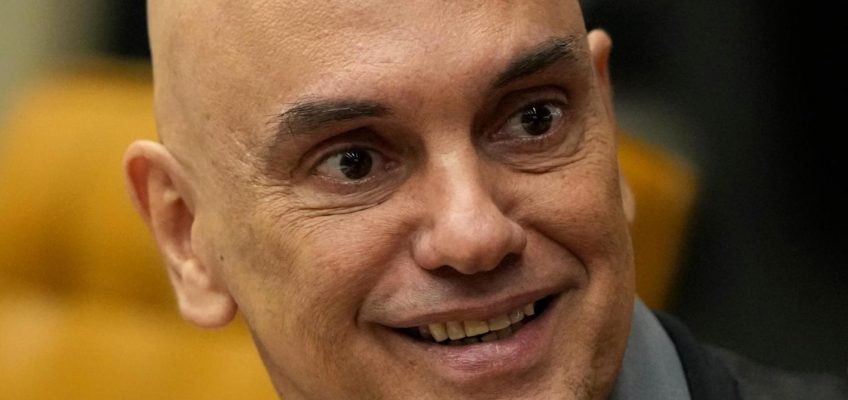By JAMES BROOKS, Associated Press
COPENHAGEN, Denmark (AP) — Facing complex bureaucracy at home in Poland, Magdalena Kujawińska and her Colombian fiancé Heinner Valenzuela traveled to Copenhagen to become husband and wife.
“We realized that it’s not that easy to get married in Poland,” the 30-year-old Kujawińska said as the couple waited for their 10-minute ceremony at the Danish capital’s 19th-century City Hall.
“You need a certificate that you are not married,” she said. “We tried to get it from Colombia, but it’s only valid for three months, and it couldn’t get to Poland from Colombia in three months. It was just impossible for us.”
The couple, who live in Krakow, had been engaged for more than three years when Kujawińska heard about Denmark’s relatively relaxed marriage laws from a colleague. Working with an online wedding planner, the couple prepared the necessary documents.
“And in four days, we had the decision that the marriage could be done here,” a smiling Kujawińska said.
Newlyweds Magdalena Kujawińska, right, from Poland and Heinner Valenzuela from Colombia pose for photos at the Copenhagen City Hall in Copenhagen, Denmark. Wednesday 9 July 2025. (AP Photo/James Brooks)
Copenhagen attracts couples from around the world
Couples who don’t live in Denmark, both mixed- and same-sex, are increasingly getting married in the Scandinavian country — prompting some to dub Copenhagen the “Las Vegas of Europe.”
The head of the marriage office at Copenhagen City Hall, Anita Okkels Birk Thomsen, said that about 8,000 wedding ceremonies were performed there last year. Of those, some 5,400 of them were for couples in which neither partner was a Danish resident.
“That’s almost double what we saw five years ago,” she said. “They come from all over the world.”
City wants to ensure room for locals
But the city sees a downside to that: demand for ceremonies at City Hall now far exceeds the number of slots available.
Mia Nyegaard, the Copenhagen official in charge of culture and leisure, said in a statement to The Associated Press that the “significant rise” in the number of foreign couples getting married in the capital “poses challenges for Copenhagen-based couples wishing to get married.”
Local authorities plan to take action. Nyegaard said about 40% of wedding slots available at City Hall will be reserved for Copenhagen residents starting from the end of October. While booking a slot there is the most obvious way to get married in the city, arranging a ceremony with a private registrar is also an option, and that won’t be affected.
Copenhagen lawmakers will look after the summer break at what else they can do to relieve overall pressure on wedding capacity in the city.
People gather in front of the Copenhagen City Hall in Copenhagen, Denmark. Friday 18 July 2025. (AP Photo/James Brooks)
Liberal laws
Denmark’s marriage laws are liberal in several ways. In 1989, the country became the world’s first to allow the registration of same-sex civil unions. The legalization of same-sex marriage followed in 2012.
For unions of all kinds, Denmark — unlike many other European countries — doesn’t require a birth certificate or proof of single status to obtain a certificate that grants the right to get married in Denmark within four months. Officials might, in cases where divorce papers don’t show clearly that a divorce has been finalized, ask for a civil status certificate.
Applications to Denmark’s agency of family law cost 2,100 kroner ($326), and couples are issued with a certificate within five working days if they satisfy the requirements.
Non-resident couples can travel to Denmark and get married with just a valid passport and, if required, a tourist visa.
Related Articles
US sanctions Brazil’s Supreme Court justice overseeing case against Bolsonaro
Russian missiles hit a Ukrainian army training ground, killing at least 3 soldiers
US-imposed tariffs spelled disaster for this factory that exported clothes to American stores
Pope marks 50th anniversary of Cold War-era deal on security and human rights
Dozens of Palestinians killed by Israeli fire in Gaza, officials say, as hunger crisis grinds on
“We get that thing like, ‘Are you sure we do not need a birth certificate?’ And we go, ‘Yes,’” said Rasmus Clarck Sørensen, director of Getting Married in Denmark.
Clarck Sørensen, a Dane, began the wedding planning business with his British wife back in 2014.
“In the last 20, 30 years, people just meet more across borders,” he said. “Marriage rules are often made for two people of the same country getting married.”
“They kind of piled on patches onto marriage law, and a lot of people get trapped in those patches,” he added.
His online company’s “Complete Service” package, priced at 875 euros ($1,014), includes help gathering all the necessary documents, processing the certificate application and organizing the date of the ceremony.
The business says it helped over 2,600 couples last year.
Copenhagen, easily Denmark’s biggest city with the country’s best transport links, is the most popular location and so far appears to be the only one struggling with demand.
Any changes to the city’s rules will come too late to bother newlyweds Kujawińska and Valenzuela, who are now busy planning a celebration in Poland with family and friends.
“It means a lot for us because we’ve been waiting a lot for this,” Kujawińska said. “We’re really happy.”




